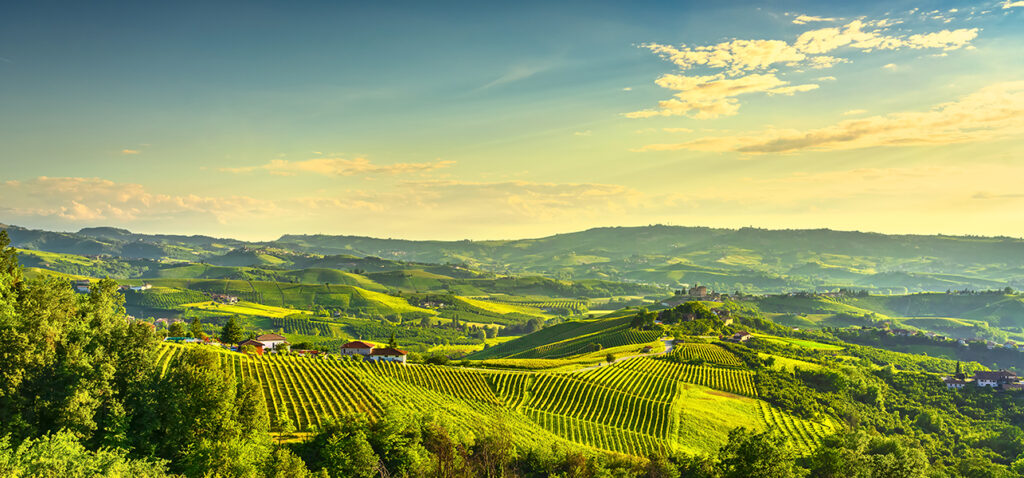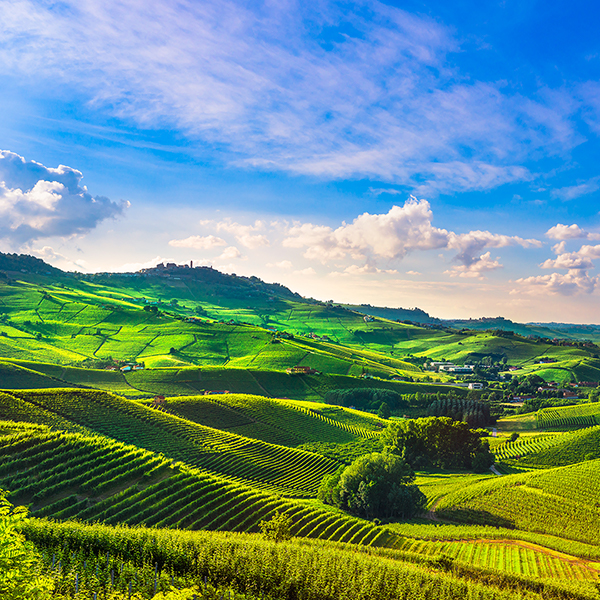Barolo DOCG

The Barolo hills, which are in the historical area known as the Langhe, resemble a rolling sea of vines. The Langhe consist of Alta (High) and Bassa (Low) parts. The Bassa Langa is where we find the growing area.
Barolo DOCG is one of the world’s great wine appellations. Its history and identity is famously intertwined with the red grape, Nebbiolo. This noble varietal ripens late, and so requires the very best south-facing slopes of the area. Although growers can plant up to 540m, they generally choose the mid-slopes, to ensure full ripening.
In winemaking terms, the region is in two parts. That is to say, to the west – around La Morra and Barolo – the soils are Tortonian. These are compact and fertile chalky clay and lime. Wines from here are more elegant and fruity, and mature more quickly. Whereas in the east, soils are from the older Serravalian era. These are sandy and silty, with sandstone – and therefore less fertile. As a result, the wines are more structured and fuller-bodied. They take longer to mature. Named villages here include Serralunga d’Alba, Monforte d’Alba and parts of Castiglione Falletto.
Similarly to other Italian regions, the Barolo growing area splits into MGA’s (Menzione Geografiche Aggiuntive). These are named vineyards with their own characteristics. There are, therefore, similarities with the French Crus. Important names include Liste, Cannubi and Villero. Visit the Consorzio to find a full map of all 181 MGAs.
The Barolo flavour profile
Barolo is pale in colour and turns brickish as it ages. The wines are intense. They show a mix of floral (rose, violet) notes and intense fresh fruit (red cherries, berries). They also present spice and liquorice, and the character of barrel and bottle ageing (tar, tobacco, forest floor, etc). The wine is high in tannin and acids. The best examples age for many years, and the tannins develop and soften over time.
Barolo Chinato
Barolo Chinato is a speciality of the region. This is a traditional drink which pharmacies used to sell as medicine. It is a blend of fortified Barolo and quinine, with other herbs and spices. These days it is drunk as an aperitif or paired with desserts and dark chocolate.

Piemonte: Barolo DOCG
Barolo is one of the world’s great wine appellations. The wines are complex, intense, elegant and structured. Furthermore, the best examples are highly ageworthy.
You can learn more about Barolo here and more generally about Piedmont here. The ‘Langhe’ winemakers consortium website is also a fabulous resource.
